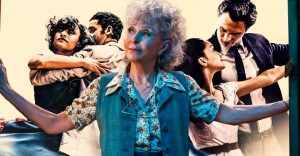Doctor Who Already Knows How To Fix Its Biggest Companion Problem

A new era of Doctor Who is right around the corner and returning showrunner, Russell T. Davies, knows how to fix the series’ growing companion problem. Davies left the show in 2010 following the Tenth Doctor’s (David Tennant) regeneration, and the subsequent storylines have been handled by two different head writers–Steven Moffatt and Chris Chibnall. These changes to the core writing team have produced different relationships between the Doctor and their companions, which was especially evident during Chibnall’s run with the show.
Jodie Whittaker’s Doctor ushered in a new era for the show. The first female Doctor not only systemically changed the Time Lord’s power over those she met but also opened the Tardis doors to more returning companions than the show has ever seen. For Chibnall’s first and second series, the Doctor’s adventures were accompanied by three partners: Yaz, Graham, and Ryan. With the latter two actors leaving the show in 2021, season 13 added John Bishop’s Dan to the team.
The sheer number of travelers accompanying Whittaker’s Doctor has led to one of the biggest problems with Chibnall’s Doctor Who era. Introducing a new companion can be achieved in a singular episode, and while it is reasonable that this may take a bit longer when the show is also tasked with introducing a new Doctor, the number of companions in Chibnall’s series has meant that no individual member has been allowed to develop. The quick fix for Davies’ upcoming series would be to return to his roots and cut the number of people in the Tardis down to two.

Unlike many of the Doctor’s previous companions, the show has provided very little backstory for those attached to Jodie Whittaker’s incarnation. What has been added—Ryan’s dyspraxia, and Yaz’s love for the Doctor—appears as more of an afterthought than an intrinsic part of their personalities. With all three companions being new to the show and debuting alongside a new Doctor, Chibnall’s series has never been able to flesh out the group pasts a few basic defining traits. An overcrowded Tardis leads to an overcrowded story, and without any room for character development, the recent series have struggled to provide any link between the audience and the lead characters.
A point of comparison can be drawn to the Tenth Doctor’s Donna Noble. After appearing in the 2006 Christmas special, “The Runaway Bride,” Noble returned to the series in 2008’s “Partners in Crime.” Most of this introductory episode was dedicated to establishing the new companion’s relationship to the Doctor, world views, and family. The clear foundations of the companion is what made Davies’ Doctor Who great. In setting up Donna, the show provided a point of identification for the audience and a character arc that could be followed over the course of the series.
If the show is going to return to this level of character development in its companions, then Davies will have to limit the number of people consistently in the Tardis, as he has done successfully in the past. Former showrunner Steven Moffat eventually found success in bringing both Amy Pond and Rory Williams alongside Matt Smith’s Eleventh Doctor—but this was done by making them indispensable to the plot through ambitious, long-term writing across multiple series, and should be considered the exception rather than the rule. By going back to two leads, Doctor Who will be able to once again provide development and clear character arcs throughout the series, escaping the biggest problem of Chibnall’s era as showrunner.
















